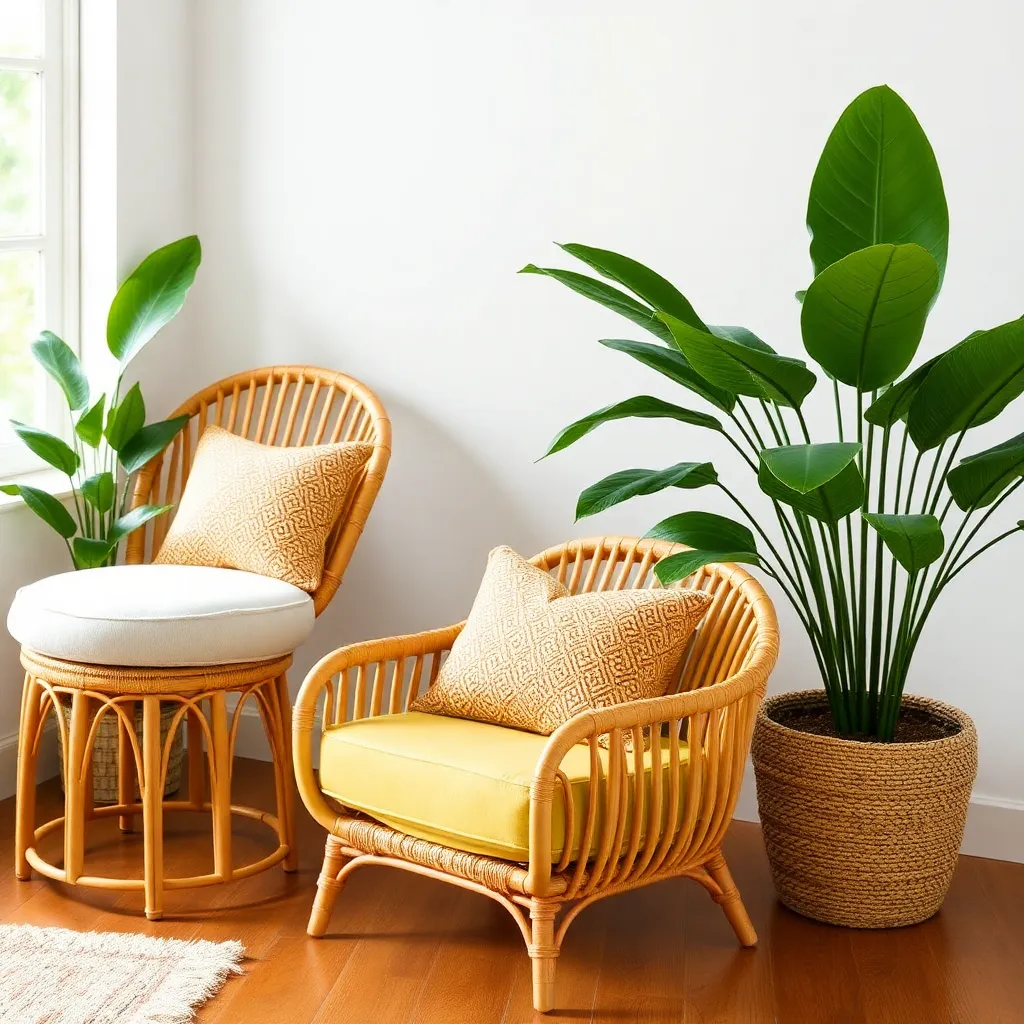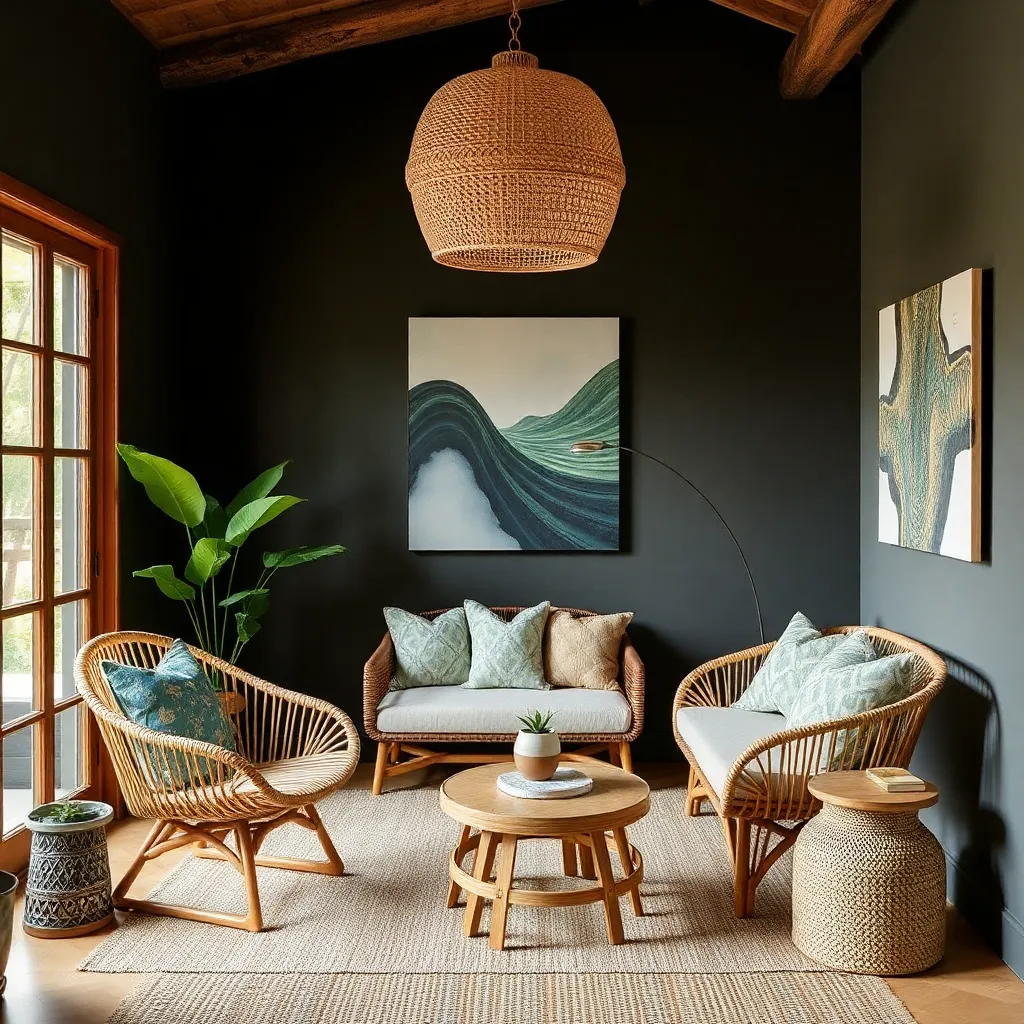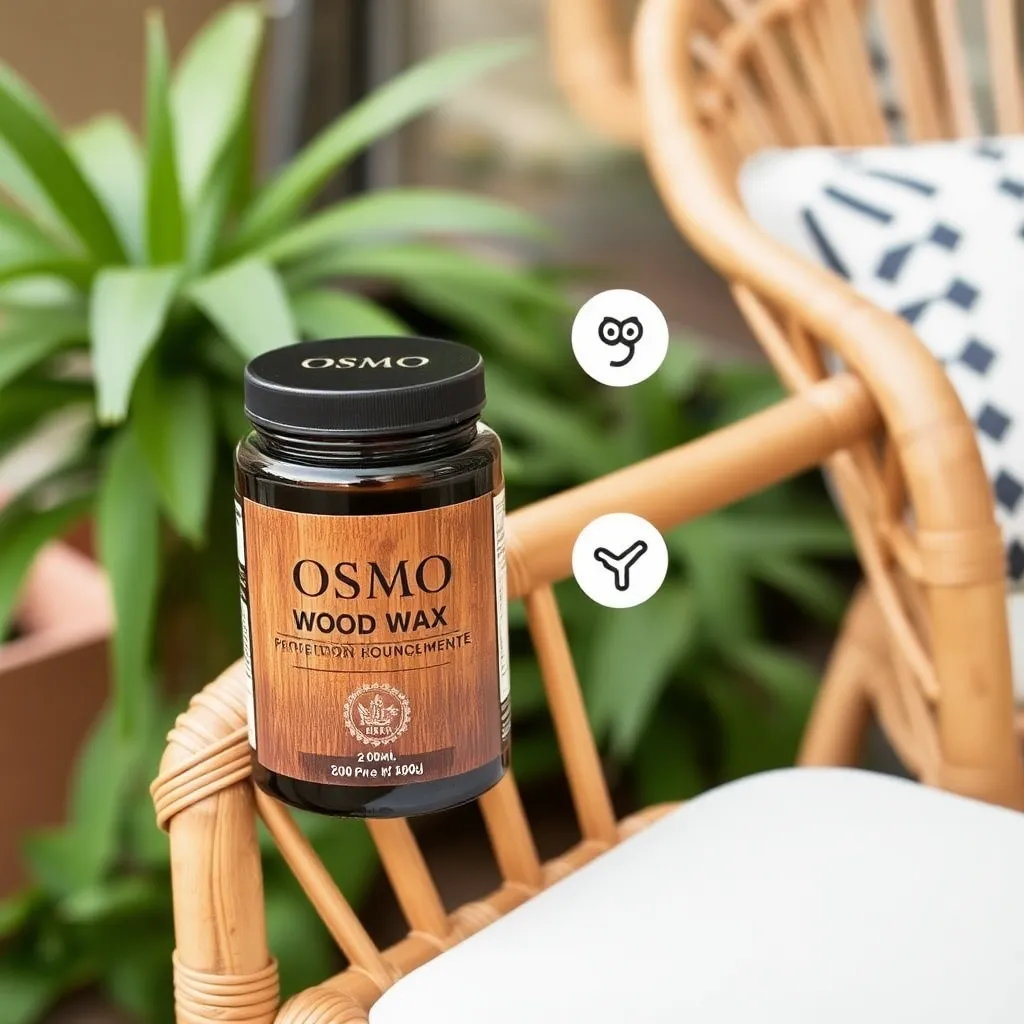The perfect rattan finish combines traditional oil-based treatments with modern protective coatings, achieving optimal durability while maintaining natural aesthetics. It requires proper surface preparation, multiple thin layers of finish, and regular maintenance to preserve both appearance and structural integrity. The finish should enhance rattan’s inherent properties while providing protection against environmental factors.
As an advocate for Lighting a Greener Future, I’m passionately thrilled to guide you through the enchanting world of rattan finishes. Let’s transform your space with this sustainable marvel!
Understanding Rattan and Its Unique Qualities
Nature’s gift to interior design comes in many forms, but rattan stands uniquely apart.
What is Rattan?
Natural weave patterns define rattan’s character. This flexible material grows in Southeast Asia’s tropical forests, reaching maturity in just 3-5 years. I strongly believe that rattan’s rapid growth rate makes it superior to traditional hardwoods, despite some designers’ preference for slower-growing materials.

Types of Rattan Finishes
The market offers various finishes, each bringing its own charm. Danish Oil Finish provides a warm amber glow, while Rubio Monocoat creates a matte appearance. For optimal protection, consider this comparison:
| Finish Type | Durability | Aesthetic Appeal | Environmental Impact |
|---|---|---|---|
| Natural Oil | High | Organic | Minimal |
| Lacquer | Very High | Glossy | Moderate |
| Wax | Medium | Natural | Low |
When choosing the perfect finish, understanding the differences between natural and dyed rattan is crucial for achieving your desired aesthetic outcome while maintaining the material’s inherent beauty.
The Sustainability of Rattan
According to Brooke Moore, rattan represents a sustainable material choice. The industry is projected to reach USD 1.05 billion by 2029, showing remarkable growth. Tropical charm meets eco-friendliness in perfect harmony. Have you considered how your furniture choices impact our planet’s future?
Choosing the Right Rattan for Your Interior
The perfect rattan selection requires careful consideration of various factors.
Factors to Consider When Selecting Rattan
The surface coating should complement your interior space. Tung Oil Treatment enhances rattan’s natural beauty while providing protection. Your rattan piece becomes part of a larger durability system.

Common Misconceptions About Rattan
Let’s debunk some myths. Many believe rattan is the same as bamboo, but they’re distinctly different materials. A traditional weaving pattern requires specific techniques unique to rattan. Two paragraphs explain the differences clearly.
Weathered gray tones develop naturally over time, adding character. This aging process actually enhances rattan’s appeal.
Current Debates in Rattan Usage
The discussion around protective coating continues to evolve. Some argue for synthetic finishes, while others advocate for natural options. Three distinct perspectives emerge.
Modern designers like Bilal Rehman emphasize versatility. I challenge the common notion that rattan only suits tropical decor styles.
The artisanal craft deserves recognition. What role do you think traditional craftsmanship plays in modern interior design?
Incorporating Rattan into Your Interior Design
Each piece tells a story of sustainability and style.

Popular Design Styles Featuring Rattan
Create visual warmth by mixing rattan with contemporary elements. The organic patterns complement various design approaches:
- Bohemian chic
- Modern tropical
- Scandinavian fusion
- Contemporary classic
- Industrial blend
Creative Uses of Rattan in Interiors
Surface finish transforms ordinary pieces into rustic appeal statements. Two contrasting approaches demonstrate rattan’s flexibility.
Both woven furniture and accent pieces contribute to the overall aesthetic.
For those interested in exploring different styles, consider how woven rattan compares to solid rattan in creating unique interior elements, from statement furniture pieces to contemporary lighting fixtures that add character to your space.
Lighting Considerations with Rattan Furniture
Wicker finish creates interesting shadow plays. Three lighting scenarios enhance rattan’s texture:
- Natural daylight emphasizes grain patterns
- Evening ambiance softens braided details
- Accent lighting highlights smooth surfaces
Maintenance and Care for Rattan Furniture
Proper care ensures lasting beauty and functionality.
While proper finishing is essential, regular cleaning and maintenance of rattan plays a vital role in preserving its durability and appearance, especially when considering the strength and longevity of rattan materials in various applications.
Cleaning and Maintenance Tips
The market research indicates growing interest in sustainable furniture care. Apply gentle cleaning techniques to preserve the natural beige tones.
Seasonal Care for Outdoor Rattan
Osmo Wood Wax provides excellent protection against elements. Two seasonal maintenance routines keep outdoor pieces pristine.
The renewable source nature of rattan makes replacement parts sustainable.

Enhancing Longevity with Protective Finishes
Research shows that proper finishing can extend furniture life by decades. Three protection layers work together:
- Base sealing
- Protective coating
- Regular maintenance
The Future of Rattan in Interior Design
Innovation meets tradition in tomorrow’s rattan applications.
Emerging Trends in Rattan Usage
The sustainable aesthetic continues to evolve. Minwax Clear Lacquer represents modern finishing solutions.
The Role of Artisans in Rattan Craftsmanship
Traditional skills merge with contemporary design needs. Two generations of craftsmen share their perspectives.
Ethical Sourcing of Rattan Products
The carbon footprint of rattan production remains minimal. Three ethical considerations guide responsible sourcing.
This tropical aesthetic journey transforms spaces while preserving traditions. Together, we’re creating more sustainable interiors, one rattan piece at a time.
Exploring the Cultural Significance of Rattan
The traditional weaving techniques of rattan connect us deeply to cultural heritage and artisanal craftsmanship.
Historical Context of Rattan Use in Furniture Making
Handcrafted rattan furniture tells stories spanning generations. From ancient Asian households to colonial European mansions, rattan’s journey is remarkable. The organic patterns created through traditional weaving methods have remained largely unchanged for centuries, proving that true artistry transcends time. I firmly believe the persistence of these traditional techniques is more valuable than modern manufacturing efficiency.

Modern Adaptations and Innovations in Rattan Design
Today’s innovations honor tradition while embracing progress. Consider how sustainability interests drive new approaches:
- Digital design meets handweaving
- Biodegradable finish innovations
- Smart furniture integrations
- Modular rattan systems
- Hybrid material combinations
Two contrasting phenomena shape modern rattan design. First, research from market analysis shows that Gen-Z designers like Bilal Rehman are reinventing traditional patterns for contemporary spaces. Second, established artisans preserve ancient techniques while incorporating sustainable materials.
The evolution continues as wooden furniture makers integrate rattan elements. Three key innovations stand out in recent developments:
- UV-resistant natural finishes
- Modular assembly systems
- Smart furniture integration
Looking ahead, what role do you think technology will play in preserving traditional rattan craftsmanship? And how can we balance innovation with cultural preservation?
This exploration of rattan’s cultural significance reminds us that choosing the perfect finish isn’t just about aesthetics or durability – it’s about connecting with a rich heritage while embracing sustainable futures. The tropical charm of rattan continues to captivate designers and homeowners alike, creating spaces that tell stories of both tradition and innovation.
FAQ:
What is the ideal thickness for rattan protective coating?
A single layer of marine-grade lacquer at 2-3mm thickness provides optimal protection while maintaining the natural texture of rattan.
How does humidity affect different rattan finishes?
Oil-based finishes perform better in high humidity environments, offering 30% more moisture resistance than water-based alternatives.
Can vintage rattan furniture be refinished with modern coatings?
Vintage rattan can be successfully refinished using modern nano-coatings, provided the original weave structure remains intact.
What are the signs of over-finishing rattan furniture?
Over-finishing manifests as a plastic-like sheen, loss of natural texture, and reduced flexibility at weave intersections.
How do different climate zones affect rattan finish selection?
Coastal areas require UV-resistant finishes, while dry climates benefit from moisture-retaining oil-based treatments.


